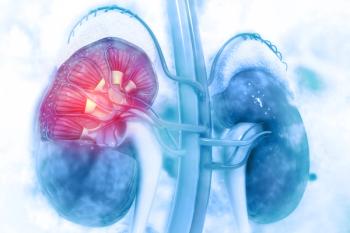
Four Pillars to Achieve Patient Centricity
ZS Associates specify the four pillars of patient centricity that can help the demands and complexities of clinical trials.
Despite CEO proclamations
Yet being patient centric in 2017 is much different than being patient centric 10 years ago. Today’s patients are more informed, engaged, and connected. For example, four out of five patients expect to be more active in managing their health than in the past.
Pharmaceutical companies also have to contend with an increasingly complex drug development and healthcare landscape, with a growing web of stakeholders influencing treatment approvals and health decisions. Scientists, regulators, industry payers, providers, and patients all are jockeying to have their voices heard across the development continuum, which historically was primarily focused on regulatory input.
Meanwhile, trials are growing more specialized and complex, competing for ever-shrinking pools of eligible participants. A typical Phase III protocol has 86% more endpoints, 58% more procedures, 61% more eligibility criteria, and 58% more investigative sites than 10 years ago,
The Four Pillars of Patient Centricity
Patient centricity can play a role in helping to mediate some of the growing demands and complexities of trials. Truly patient-centric clinical trials enable sponsors to more directly and methodically align the objectives of a clinical trial to the true needs of patients and can result in more meaningful endpoints, an up-front understanding of operational issues, enhanced patient recruitment and patient retention, and better support for participating sites. But the strategies and skills necessary to design and execute successful, patient-centric clinical trials in this dynamic environment must keep pace with the changing landscape of empowered patients, drug development, and healthcare.
Based on our extensive experience and original research conducted with clinical trial participants and pharmaceutical executives, we created a framework to address the evolving concept of patient-centric clinical trials. Described at length in an article by some of our colleagues,
1. Understanding patients: All sponsor stakeholders and trial administrators should understand the clinical trial patient journey and gain empathy for the patients’ and caregivers’ experiences.
2. Meeting patients’ needs: Trials should measure outcomes that enhance patients’ lives while minimizing the burden on participants and their caregivers.
3. Connecting patients: Pharmaceutical and medical device companies should provide trial participants with transparent, comprehensible trial information, data and results; support programs and resources through convenient and usable channels; and access to the growing potential of digital and mobile health technologies.
4. Engaging patients: Sponsors should ensure that patient and caregiver engagement occurs throughout the trial by seeking input and feedback at every stage.
These four pillars of patient centricity adapt to different phases of development, allow organizations to apply patient-centric strategic thinking to their trials, and provide guidelines to develop processes that would lead to a successful trial design or refine their efforts to move to the next level of patient centricity.
For example, clinical trial patient journey mapping is an effective tactic to develop an initial understanding of the participant experience and can be a valuable tool to identify potential barriers to participation, trial pain points, and unmet participant needs before a trial begins. After surfacing these issues, organizations must engage patients and caregivers to co-create and test solutions that effectively address them. Inspired by design thinking, this “human-centered, prototype-driven process for innovation”
Improve Clinical Trials
Patient centricity can help pharma organizations by striking a better balance between patient needs and desires and regulatory limits and requirements. Through a deeper understanding of and connection with patients, organizations can facilitate meaningful two-way communication to help manage patient expectations while being able to better meet their needs.
For example, only 16% of oncology patients are aware that trials are a treatment option.
Patient engagement is necessary to identify patient concerns like these and to gain a deeper understanding of both the emotional and logistical barriers to trial participation. However, listing trials on clinicaltrials.gov or creating another patient communication explaining trial procedures isn’t enough: innovative, patient co-created solutions are imperative to addressing these pervasive gaps and doubts. Organizations should ensure that they have experts who understand best practices in patient-centric behavioral science and design thinking, and can apply these powerful tools in the context of clinical trials.
At an organizational level, a commitment to patient centricity can help ease the challenges of balancing the needs of multiple internal and external stakeholders. By establishing a unified strategy and top-down approach to patient-centric thinking, organizations can achieve the company-wide mindset shift that’s necessary to becoming truly patient centric.
Embracing patient centricity at the organizational level also allows companies to tackle another common challenge: measuring the ROI for patient-focused initiatives. A holistically patient-centric company will be empowered to evaluate the far-reaching effects of their efforts. By comparing “traditional” historical or competitor trials with more patient-centric trials, companies can expect to encounter fewer protocol amendments, shorter trial timelines, and fewer patient compliance issues.
Time and again, sponsors have said that speaking to patients about potential trial protocols caused them to significantly alter the protocol and remove the perceived barriers to participation that the patients identified, ultimately saving the trial from costly and time-consuming protocol amendments.
Talking to patients before a trial begins, or simulating the trial experience with patients, can also enhance participant compliance and satisfaction.
Providing Value All Around
Externally, other stakeholders are becoming more focused on patient centricity, and pharma would be wise to keep up. Regulatory bodies have begun to offer guidance on patient engagement and encourage advocate involvement during development and evaluation. For example, the FDA has committed to patient-focused drug development and held more than 24 disease-area-focused patient input meetings between 2013 and 2017. Likewise, the European Medicines Agency revised its framework for interacting with patients in 2014, which gave rise to a marked increase in patient involvement. Sponsoring organizations that solicit similar patient input up front during the trial design phase will benefit from improved designs and be in a better position for regulatory discussions-a clear win for pharma, patients and regulators alike.
Furthermore, regulators and even some payers are increasingly looking to pharma to demonstrate that new treatments
Putting the Patient First
It’s critical that clinical trials continue to become more patient centric and adapt to ever-evolving patient needs. Some of the key considerations in achieving this include leveraging the methodological framework presented above and understanding trial patient needs and motivations, resulting in better trial design, recruitment and retention. By committing to patient centricity from the top down, applying the principles of patient-centric strategic thinking, and co-creating and simulating potential outcomes with patients, all trial stakeholders ultimately will benefit from better trials.
Lisa Bance, PharmD, Associate Principal; Kristyn Feldman, PhD, Associate Consultant; Venkat Sethuraman, PhD, Associate Principal and Aaron Mitchell, Principal, all with ZS Associates.
http://www.nytimes.com/2011/10/09/business/joseph-jimenez-of-novartis-on-finding-the-core-of-a-problem.html
[2] “Self Care in Today's Changing Healthcare Environment.”
NCPIE; Ipsos; Pfizer.
http://www.bemedwise.org/documents/OHS_SC_Survey_FactSheet.pdf
[3] Krebs, Paul, and Dustin T. Duncan. "Health App Use Among US Mobile Phone Owners: A National Survey." JMIR mHealth and uHealth 3, no. 4 (2015). doi:10.2196/mhealth.4924.
https://www.ncbi.nlm.nih.gov/pmc/articles/PMC4704953/
[4] Key Patient Trends in Europe 2016.
Decision Resources Group
[5] Getz, Kenneth. “Improving Protocol Design Feasibility to Drive Drug Development Economics and Performance.” International Journal of Environmental Research and Public Health 11, no. 5 (2014): 5069-080. Doi:10.3390/ijerph110505069.
[6] Kolata, Gina. “A Cancer Conundrum: Too Many Drug Trials, Too Few Patients.” The New York Times. Aug. 12, 2017.
[8] Cohen, Reuven. "Design Thinking: A Unified Framework For Innovation." Forbes. April 4, 2014. https://www.forbes.com/sites/reuvencohen/2014/03/31/design-thinking-a-unified-framework-for-innovation/#216e3f178c11
[9] Matczak, Jerry. "Patient Participation in Clinical Trials Infographic." LillyPad. Jan. 23, 2014. https://lillypad.lilly.com/entry.php?e=7073
[10] "Phases of Clinical Trials." Cancer.net. Sept. 26, 2017.
http://www.cancer.net/research-and-advocacy/clinical-trials/phases-clinical-trials
[11] English, Rebecca A., Yeonwoo Lebovitz, and Robert B. Giffin. “Transforming Clinical Research in the United States: Challenges and Opportunities: Workshop Summary.” Washington, D.C.: National Academies Press, 2010. 64. https://www.ncbi.nlm.nih.gov/books/NBK50895/
[12] Scutti, Susan. "Finding A Cure for Cancer Depends On Enrollment Of Clinical Trial Volunteers, Yet Fears Remain." Medical Daily. May 26, 2016.
http://www.medicaldaily.com/cure-cancer-clinical-trial-387836
[13] “‘Walking the talk’ in patient-centric pharma: What it will take to make a radically new business model work.” Heidrick & Struggles International, Inc. 2014.
http://knowledge.senndelaney.com/docs/thought_papers/pdf/Heidrick_SennDelaney_patientcentric.pdf
[14] Patient-Centred Culture by Design: Embedding patient-centred focus into the culture of pharmaceutical organisations. eyeforpharma. Jan. 7, 2016.
http://www.janssen.com/emea/sites/www_janssen_com_emea/files/2792_07jan16_pccultures_whitepaper_v13.pdf
[15] Lopez Kunz, Barbara. "Trial Return On Engagement: Quantifying Benefits Of Patient-Centric Initiatives." Clinical Leader. June 27, 2017.
https://www.clinicalleader.com/doc/trial-return-on-engagement-quantifying-benefits-of-patient-centric-initiatives-0001
“Capturing the Value of Patient Engagement: Summary of Results of the 2016 Patient-Centric Initiatives in Drug Development,” Drug Information Association, Jan. 31, 2017 http://engage.diaglobal.org/DIAPatientEngagementStudy.html?_ga=2.229930780.1892072276.1505996247-1943029215.1505996247
[16] Alsumidaie, Moe. "Genentech Elaborates on Patient Centricity." Applied Clinical Trials. March 30, 2017.
http://www.appliedclinicaltrialsonline.com/genentech-elaborates-patient-centricity
"Patients Involved – Patient feedback on a paediatric CML study." EUPATI. Jan. 26, 2017.
https://www.eupati.eu/patient-involvement/patients-involved-patient-feedback-on-a-paediatric-cml-study/
[17] Gagnon, Bruno, B.Pharm, MSc. "Reducing Clinical Protocol Amendments." Comprehend Systems. March 24, 2015.
http://www.comprehend.com/reducing-clinical-protocol-amendments/
Tufts Center for the Study of Drug Development Impact Report, January/February 2016
http://csdd.tufts.edu/files/uploads/Summary-JanFebIR2016_.pdf
[18] “Improve Clinical Trial Outcomes by Boosting Patient Experience: Shifting from 'Subjects' to 'Customers.' ” North Highland Worldwide Consulting. 2016.
[19] Alsumidaie, Moe. "What Patient Centricity Means to a Patient." Applied Clinical Trials. May 10, 2017.
http://www.appliedclinicaltrialsonline.com/what-patient-centricity-means-patient
[20] Basch, Ethan, M.D. "Toward Patient-Centered Drug Development in Oncology." New England Journal of Medicine. Aug. 1, 2013. http://www.nejm.org/doi/full/10.1056/NEJMp1114649#t=article
[21] Brogan, Andrew P., PhD, Carla DeMuro, MS, Amy M. Barrett, MA, MSPH, Denise D'Alessio, MBA, Vasudha Bal, MSc, MBA, and Susan L. Hogue, PharmD, MPH. "Payer Perspectives on Patient-Reported Outcomes in Health Care Decision Making: Oncology Examples." Journal of Managed Care & Specialty Pharmacy. Feb. 23, 2017. http://www.jmcp.org/doi/full/10.18553/jmcp.2017.23.2.125
[22] Doward, Lynda, MRes. “PROs, Payers and the 5th Hurdle: From Drug Development to Adoption.” Nov. 11, 2015. https://www.ispor.org/Event/GetReleasedPresentation/543
[23] Locklear, Tracie, PhD, Benjamin J. Miriovsky, MD, James Henry Willig, MD, Karen Staman, MS, Nrupen Bhavsar, PhD, Kevin Weinfurt, PhD, and Amy Abernathy, MD, PhD. “Strategies for Overcoming Barriers to the Implementation of Patient-Reported Outcomes Measures.” NIH Collaboratory.
https://www.nihcollaboratory.org/Products/Strategies-for-Overcoming-Barriers-to-PROs.pdf
Newsletter
Stay current in clinical research with Applied Clinical Trials, providing expert insights, regulatory updates, and practical strategies for successful clinical trial design and execution.






.png)



.png)



.png)
.png)
